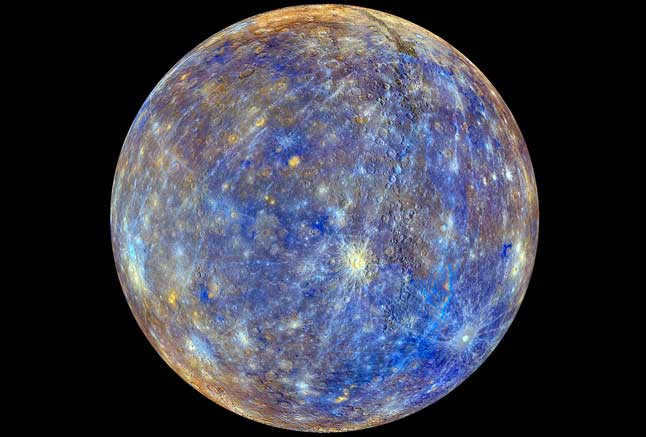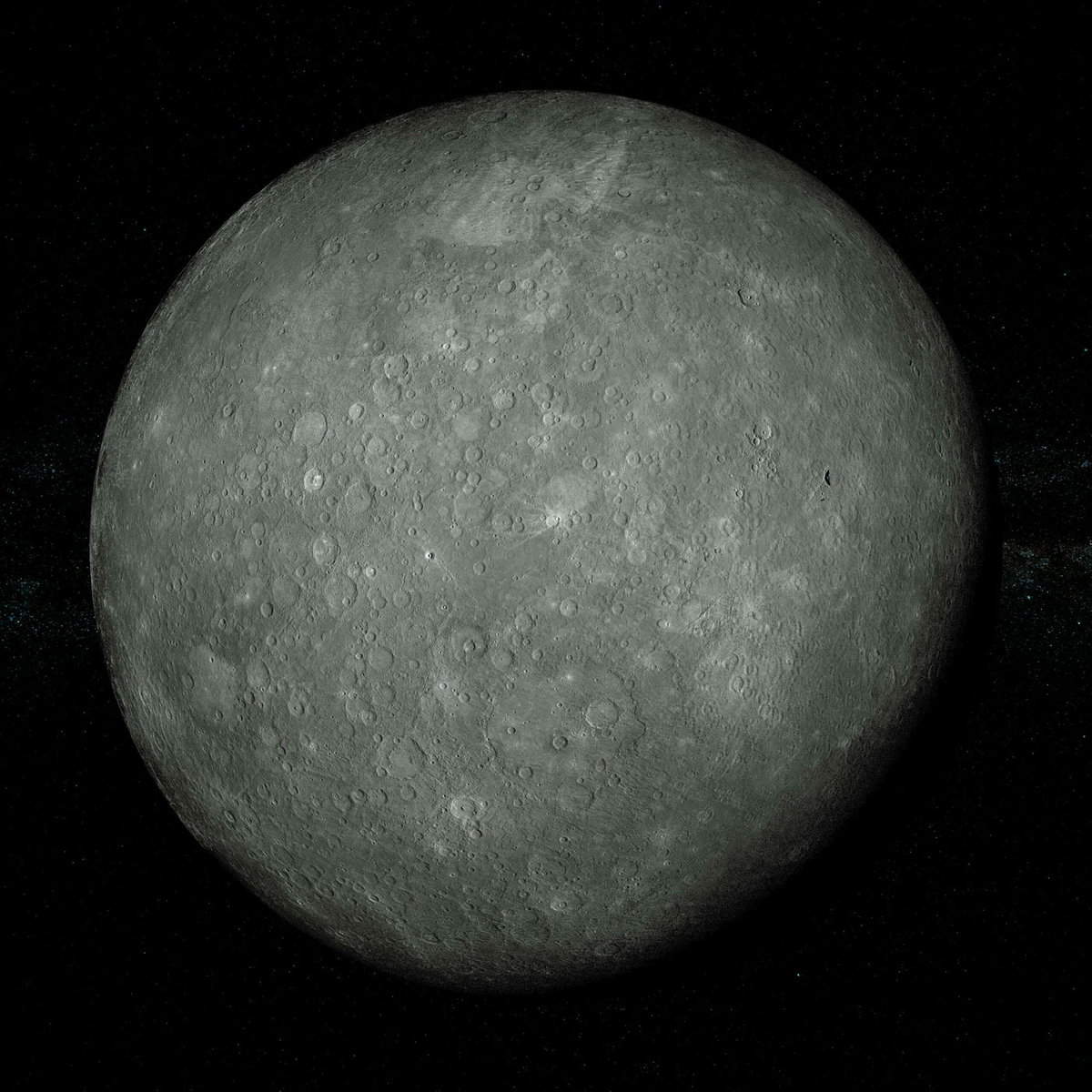Ancient civilizations believed that Mercury, the first planet of the solar system, possessed incredible speed. This led them to name the planet after the swift messenger of the gods. However, modern researchers have discovered that Mercury’s swift movement is a result of its close proximity to the Sun. Through detailed studies, scientists have unraveled the secrets of this speedy planet.

However, the planet is also remarkable for its unique temperature attributes. It must withstand extreme heat and a freezing ice age simultaneously. This rocky planet has an almost nonexistent atmosphere. However, to truly comprehend its distinct characteristics, let’s conduct a comparison between Mercury and Earth.
Dimensions, weight, and trajectory
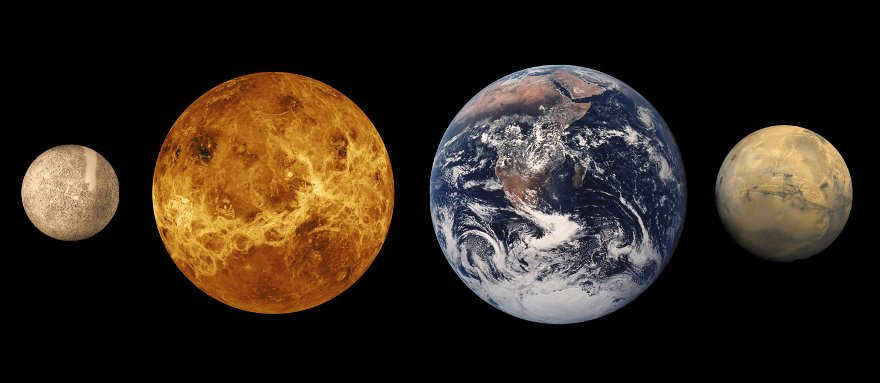

A visual representation of the relative sizes of Mercury, Venus, Earth, and Mars.
When it comes to diameter, Mercury measures 4879 km, which is only 38% of Earth’s size. To put it into perspective, you could fit three Mercuries within the boundaries of our planet. The image below provides a clear comparison, highlighting just how much larger Earth is compared to Mercury.
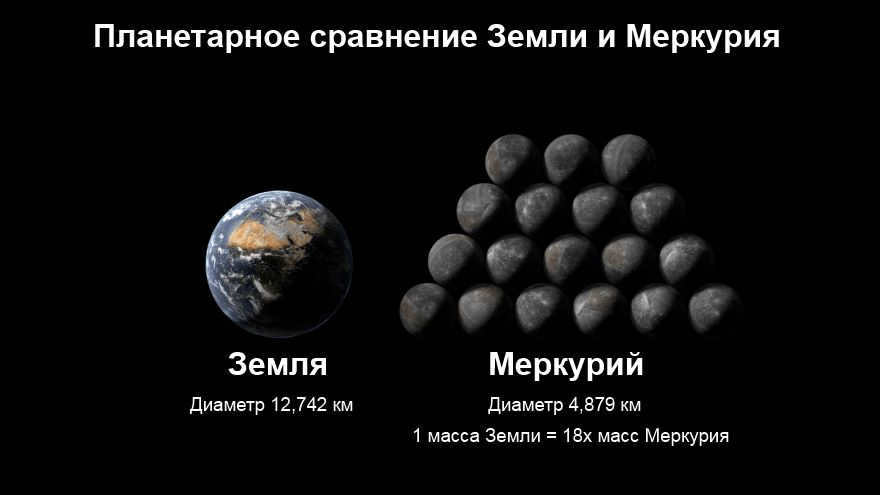

Comparison between Earth and Mercury
Mercury has a mass of 3.3 x 10 23 kg (which is 5.5% of Earth’s mass) and ranks second in terms of density at 5.427 g/cm 3 . Its surface gravity is 3.7 m/s 2, which is equivalent to 38% of Earth’s gravity. This means that if your weight is 100 kg here on Earth, it would be only 38 kg on Mercury.
Mercury has an area of 75 million km 2, which is 10% of Earth’s area. If you could turn the planet around, it would be twice the size of Asia. Its volume is 6.1 x 10 10 10 km 3, which is 5.4% of Earth’s volume. In fact, you could fit 18 Mercuries inside Earth and still have some space left.
While it takes Earth 365.25 days to complete one orbit around the Sun, Mercury only takes 87.969 days.
An experienced tarot reader will provide answers to the following questions:
What does the future hold for you? How will your relationships work out? What is the right decision to make?

One complete axial rotation on the planet takes 58.646 days, whereas the Sun takes 176 days to make a full pass across the sky. Therefore, a day on Mercury is twice as long as a year. Furthermore, Mercury is positioned at an angle of 0.027° (Earth’s angle is 23.439°), making it the smallest angle in the solar system.
Composition and structure
Mercury is composed of silicate minerals and metals, similar to Earth. However, unlike Earth which is predominantly silicate, Mercury is 70% metallic.
The planet has a molten iron core, surrounded by a mantle of silicate. In comparison to Earth, Mercury has a smaller core and mantle, measuring 1800 km and 600 km respectively, while Earth’s core and mantle measure 3478 km and 2800 km. However, Mercury’s crust is thinner, measuring 100 km compared to Earth’s 100-300 km. Additionally, the core of Mercury occupies 42% of the planet’s total volume, while Earth’s core only occupies 17%. Refer to the provided diagram for a visual representation of Mercury’s structure.
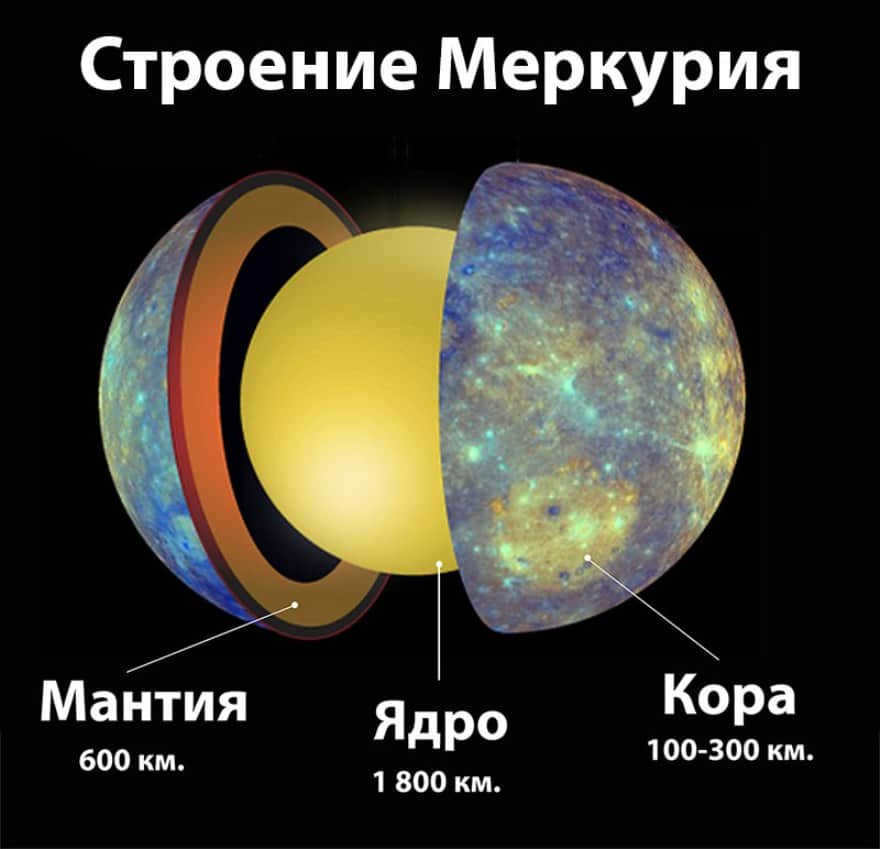
Mercury’s structure consists of a crust measuring between 100 and 300 km, a mantle approximately 600 km thick, and a core with a diameter of 1800 km.
When comparing its surface to that of the Moon, Mercury resembles Earth’s satellite. It is characterized by a dry, desert-like landscape adorned with numerous impact craters. This celestial body has remained geologically inactive for billions of years. The onslaught of asteroid impacts began during its formation approximately 4.6 billion years ago, resulting in craters of various sizes, ranging from minuscule to colossal.
The largest crater on Mercury’s surface is known as the Heat Plain, which spans 1550 km in diameter. The impact was so powerful that it triggered volcanic activity on the opposite side, forming a 2 km high ring around the crater.
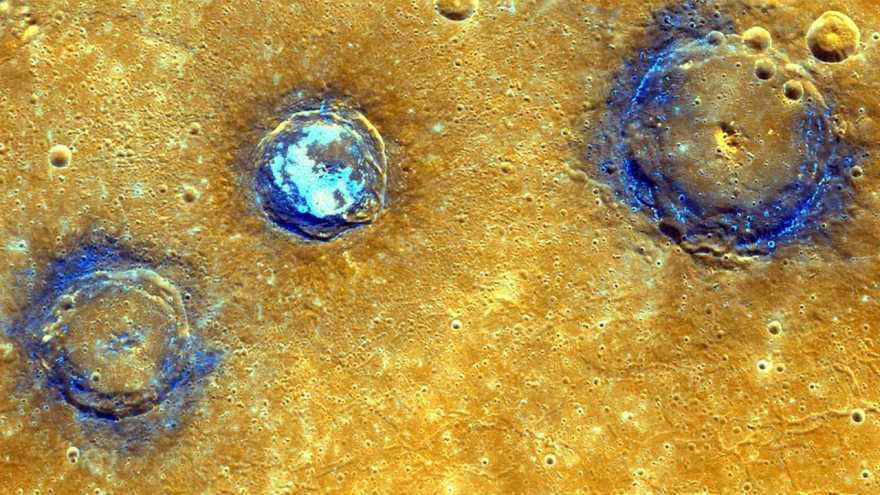
An enhanced photograph of the Munch, Sander, and Poe craters located near the Heat Plain
The Earth’s surface is incredibly diverse, featuring not only mountains and plains, but also vast continents surrounded by oceans. It encompasses various geographical features such as deserts, canyons, volcanoes, and plateaus.
Mercury, on the other hand, provides evidence of past activity through the presence of narrow ridges that extend for hundreds of kilometers. These ridges are believed to have formed during a period of planetary contraction. However, while things may have settled down on Mercury, the Earth remains dynamic. The movement of tectonic plates continues to cause periodic volcanic eruptions and earthquakes.
A knowledgeable tarot reader will be able to provide answers to your questions.
What does the future hold for you? How will the relationship pan out? What is the correct course of action?

Atmosphere and temperature
These two planets have completely different atmospheres. The Earth has a robust atmosphere with layers, as well as an abundant amount of nitrogen and oxygen.
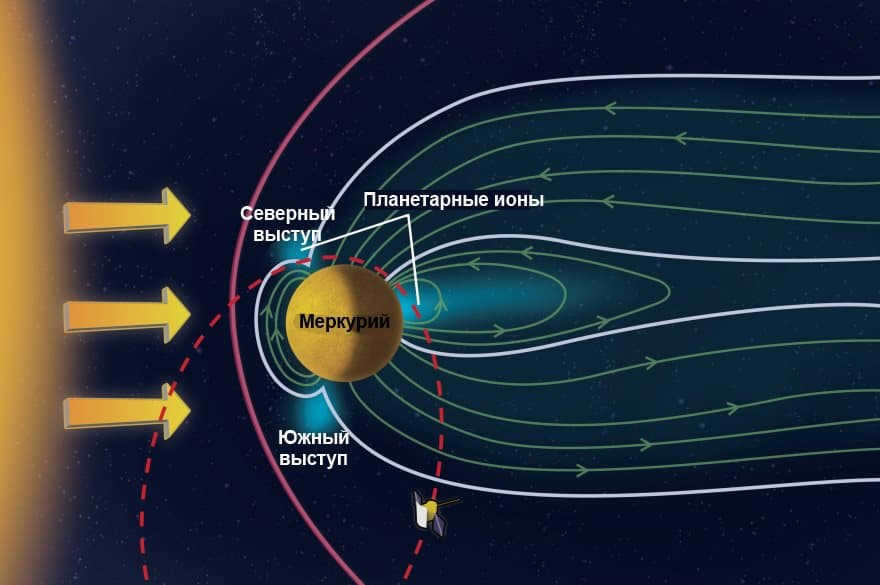

The MESSENGER spectrometer captured the phenomenon of solar winds propelling particles from the surface of Mercury into its thin atmosphere.
The average temperature on Earth is 14°C, with the highest recorded temperature being 70.7°C and the lowest recorded temperature being -89.2°C. In contrast, Mercury’s thin exosphere is unable to retain heat. When factoring in the pressure of 10 -14 bar, the sunny side of Mercury heats up to 427°C, while the temperature on the night side drops to -173°C.
Interestingly, despite these extreme temperatures, water ice is preserved at the poles of Mercury. This is because it is hidden within craters that are shielded from direct sunlight.
The nucleus of Mercury generates a relatively feeble magnetic field, amounting to just 1.1% of Earth’s magnetic field. It is believed that the process of its formation is comparable to the dynamo effect observed on our planet. Nevertheless, this magnetic field is sufficient to counteract the solar wind and create a magnetosphere around Mercury. This magnetosphere is responsible for trapping the plasma from the solar wind, leading to a gradual erosion of the planet’s surface into space.
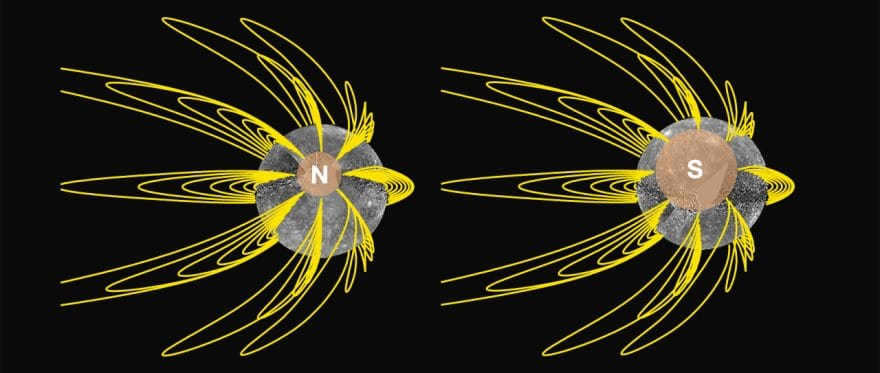

Mercury’s magnetic field structure
You might have noticed the numerous contrasts between Earth and Mercury. Despite being smaller and less massive, our neighboring planet has almost caught up in terms of density. However, the extreme temperature conditions have made it impossible for us to send a manned mission for exploration. But there is still much more to learn.
- Fascinating facts about Mercury;
- The planet closest to the Sun;
- What type of planet does Mercury belong to?
- The nearest planet to Mercury
- The age of Mercury
- Possibility of life on Mercury
- Discovery of the planet Mercury
- Who discovered Mercury?
- Have humans ever visited Mercury?
- What is the origin of the name “Mercury”?
- Transforming Mercury’s Environment
The Position and Movement of Mercury
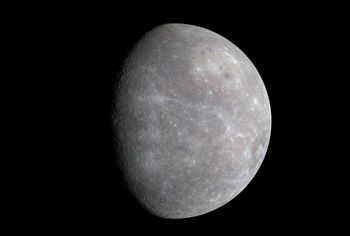

Mercury is positioned as the primary celestial body from the Sun and is recognized as the tiniest planet within our solar system. Its extraordinary characteristics have made it one of the most unique entities in the universe. Named after the Roman gods’ messenger, Mercury, it holds a significant place in various cultures and legends due to its visibility without the aid of instruments.
Nevertheless, this celestial body remains enigmatic. Mercury exhibits distinctive phases and can be observed during both the morning and evening.
Did you know? [ ]
- Mercury has some interesting facts! For example, one solar day on Mercury covers 176 Earth days, while a sideric day (which measures its axial rotation) covers 59 Earth days. Another fascinating fact is that Mercury has the greatest orbital eccentricity among all the planets, and its distance from the Sun is about 57.91 million kilometers.
- Mercury is one of the five planets that can be seen without the use of instruments. It has a diameter of about 4879 km at the equator.
- Each cubic centimeter of Mercury has a density of about 5.4 grams. However, Earth actually has a higher density than Mercury because Mercury is composed mostly of heavy metals and rocks.
- As the iron core of Mercury cooled and shrank over time, the surface layer of the planet became wrinkled. These wrinkles can stretch for hundreds of miles.
- Despite Venus being located farther from the Sun, its surface consistently maintains the highest surface temperature due to the greenhouse effect. The day side of Mercury warms up to 427°C, while the night side drops to -173°C. Unfortunately, Mercury lacks an atmospheric layer, which prevents it from evenly distributing heat.
- Mercury: The Most Cratered Planet
- Geological processes play a crucial role in rejuvenating the surface of planets and smoothing out crater marks. However, Mercury does not have this advantage. All of its craters are named after artists, writers, and musicians. Impact formations larger than 250 kilometers in diameter are referred to as basins, with the largest one being the Plain of Heat, stretching 1,550 kilometers.
- Due to its proximity to the Sun, Mercury faces unique challenges. Mariner 10 orbited the planet three times between 1974 and 1975, mapping just under half of its surface. MESSENGER also conducted a mission to Mercury in 2004.
- The precise date of the planet’s detection remains uncertain as it has been mentioned as far back as the Sumerians in 3000 BC.
- Although its gravity is merely 38% of Earth’s, it is insufficient to maintain a steady atmosphere (which is eroded by solar winds). However, the gas dissipates but gets replenished by solar particles and dust.
The Characteristics of the Planet Mercury
Mercury, the smallest planet in the solar system, has a radius of 2440 km and a mass of 3.3022 x 10 23 kg. In terms of size, it is only 0.38 times the size of Earth. While it may be smaller than some satellites, Mercury has the second highest density after Earth, measuring 5.427 g/cm 3.
Mercury boasts the most eccentric orbit among all the planets. Its distance from the Sun can vary from 46 million km at perihelion to 70 million km at aphelion. With an average orbital velocity of 47322 km/s, it takes Mercury 87.969 days to complete one orbit around the Sun.
The planet’s axial revolution speed is 10.892 km/h, resulting in a day on Mercury lasting 58.646 Earth days. This indicates that Mercury is in a 3:2 resonance, with three axial rotations occurring for every two orbital rotations.
The planet’s eccentricity and slower rotation result in a 176-day orbital period, meaning that one day on the planet is twice as long as a year. Additionally, it boasts the lowest axial tilt of any planet, measuring just 0.027 degrees.
The composition and surface characteristics of Mercury
Mercury is composed of approximately 70% metallic materials and 30% silicate materials. Its core makes up about 42% of the planet’s total volume (compared to Earth’s 17%). The core consists of molten iron, surrounded by a silicate layer measuring between 500 and 700 km in thickness. The surface is covered by a crust that ranges from 100 to 300 km in depth. Notably, the surface is marked by numerous ridges that extend for kilometers.
Mercury’s core contains the highest concentration of iron compared to other planets in our solar system. It is theorized that Mercury was once much larger, but a collision with a large object caused the outer layers to collapse, leaving behind the main body.
Some scientists speculate that Mercury may have formed in the protoplanetary disk before solar energy stabilized. In this scenario, it would have been twice as massive as its current state. At temperatures of 25000-35000 K, most of the rock could have vaporized.
Another hypothesis suggests that particles in the solar nebula could have collided and merged to form Mercury. The lighter particles would have drifted away and not contributed to Mercury’s formation.
From a distance, the planet appears to be similar to a satellite orbiting the Earth. It displays a crater-filled landscape with plains and evidence of lava flows. However, there is a greater variety of elements present.
Mercury was formed approximately 4.6 billion years ago and experienced bombardment from an array of asteroids and debris. As there was no atmosphere, the impacts left visible marks. Despite this, the planet remained geologically active, resulting in the creation of lava flows and plains.
The craters on Mercury range in size, with some being small pits while others are basins spanning hundreds of kilometers. The largest crater, Caloris, has a diameter of 1,550 kilometers. The impact was so powerful that it triggered a lava eruption on the opposite side of the planet. Additionally, the crater itself is encircled by a concentric ring that measures 2 kilometers in height. Overall, there are approximately 15 large crater formations on the planet’s surface.
This field possesses enough strength to withstand the powerful winds emitted by stars and form a protective layer known as the magnetosphere. Its resilience is sufficient to prevent plasma from entering the winds, leading to the occurrence of surface weathering.
The Atmosphere and Temperature of the Planet Mercury [ ]
Due to its close proximity to the sun, the planet experiences excessive heating, which prevents it from retaining a substantial atmosphere. However, scientists have observed a thin and variable exosphere consisting of hydrogen, oxygen, helium, sodium, water vapor, and potassium. The overall pressure level approaches approximately 10-14 bars.
Without the presence of an atmospheric layer, solar heat does not accumulate, resulting in significant temperature fluctuations on Mercury. On the sunny side, temperatures can reach as high as 427 degrees Celsius, while on the dark side, they drop to -173 degrees Celsius.
Nevertheless, the lunar surface harbors a combination of water ice and organic compounds. The crucial factor lies in the varying depths of the pole craters, which prevent direct sunlight from reaching inside. Scientists speculate that these craters may hold around 10^14 – 10^15 kg of ice. The origins of this ice on the moon remain uncertain, with possibilities ranging from contributions by comets to the release of water vapor from the planet’s interior.
The Evolution of the Study of Planet Mercury
The planet Mercury has captivated human imagination since ancient times, featuring prominently in myths and legends. The earliest known records of Mercury’s observation can be traced back to the Moul Apin tablet, which served as astronomical and astrological records in ancient Babylon.
These ancient observations, dating back to the 14th century BC, describe Mercury as a “dancing planet” due to its incredibly fast movement. In ancient Greece, it was referred to as Stilbon, meaning “shine,” and was associated with the messenger of Olympus. The Romans later adopted this concept and bestowed the planet with its modern name, paying homage to their pantheon.
Ptolemy, in his works, made mention of planets passing in front of the Sun. However, he did not include Mercury and Venus as examples, deeming them too small and inconspicuous to be notable.
The Chinese referred to it as Chen Xin (“Clock Star”) and associated it with water and the northern direction. Additionally, Asian culture still upholds this concept of the planet, which is even documented as the fifth element.
Among the Germanic tribes, there was a connection observed with the god Odin. The Mayans perceived four owls, with two being responsible for the morning and the other two for the evening.
The geocentric orbital path was mentioned as early as the 11th century by an Islamic astronomer. In the 12th century, Ibn Bajya observed the passage of two small dark bodies in front of the Sun. It is likely that he saw Venus and Mercury.
In the 15th century, the Indian astronomer Somayaji of Kerala devised a partial heliocentric model in which Mercury revolved around the Sun.
The initial telescopic observation dates back to the 17th century, when Galileo Galilei carefully examined the various phases of Venus. However, due to the limitations of his apparatus, he was unable to study Mercury in the same manner. It was not until 1631 that Pierre Gassendi made note of the transit of Mercury.
In 1639, Giovanni Zupi made significant progress in studying the orbital phases. His observations confirmed the concept of rotation around the star and validated the heliocentric model.
Giovanni Schiaparelli made more precise observations in the 1880s. He estimated that the orbital period of Mercury was 88 days. Later, in 1934, Eugios Antoniadi created a detailed map of Mercury’s surface.
Soviet experts successfully repelled the initial radar signal in 1962. In 1965, the Americans replicated the test and determined the rotational period to be 59 days. Traditional visual observations did not yield any new information, but the use of interferometers allowed for the examination of the chemical and physical properties of the underground area.
In 2000, the Mount Wilson Observatory conducted the first comprehensive analysis of surface characteristics. The majority of the mapping was carried out using the Arecibo Radar Telescope, which has a range of 5 km.
Investigation of the planet Mercury
Prior to the initial unmanned mission, our knowledge regarding the morphological characteristics of Mercury was limited. The first mission, Mariner, took place in 1974-1975 and provided valuable insights. It made three close approaches to the planet and captured numerous high-resolution images.
However, due to its extended orbital period, Mariner approached the same side of Mercury each time, resulting in a map that covered only 45% of the total surface area.
During the first approach, the spacecraft was able to record the planet’s magnetic field. Subsequent approaches revealed that it closely resembled Earth’s magnetic field, as it effectively deflected stellar winds.
In 1975, the spacecraft depleted its fuel and contact was lost. Nevertheless, Mariner 10 continues to orbit the Sun and periodically encounters Mercury.
The second messenger was MESSENGER. Its task was to analyze various aspects of the planet, including density, magnetic field, geology, core structure, and atmospheric features. To ensure the highest resolution, special cameras were installed, and spectrometers were used to identify the constituent elements.
MESSENGER was launched in 2004 and conducted three flybys starting from 2008 to cover the areas that were missed by Mariner 10. In 2011, it entered an elliptical planetary orbit and started capturing images of the planet’s surface.
After that, a one-year mission was launched. The final maneuver took place on April 24, 2015. However, the satellite depleted its fuel and crashed into the surface on April 30.
In 2016, ESA and JAXA collaborated to develop BepiColombo, which is expected to arrive at the planet in 2024. This mission consists of two probes that will study the magnetosphere and the planet’s surface across all wavelengths.

Mercury is one of the four planets in the Solar System that belongs to the Earth group. It got its name from the ancient Roman god of commerce. This planet is known for being the closest to the Sun and also for being the smallest one in the system. Now, let’s take a quick look at some important details about Mercury, its characteristics, basic measurements, and even some fun facts that will surely captivate children’s attention.
Basic details
Mercury is the primary planet orbiting the Sun and is located an average distance of 58 million kilometers away from it. It is part of the group of planets known as the Terrestrial Planets, which includes Venus, Earth, and Mars, and shares similarities in terms of size and structure.
The planet was given its name in homage to the swift Roman god of commerce, Mercury, due to its rapid movement across the celestial sphere compared to other planets. Its orbital period around the Sun is a mere 87.97 Earth days, making it the shortest among all the planets in our solar system.
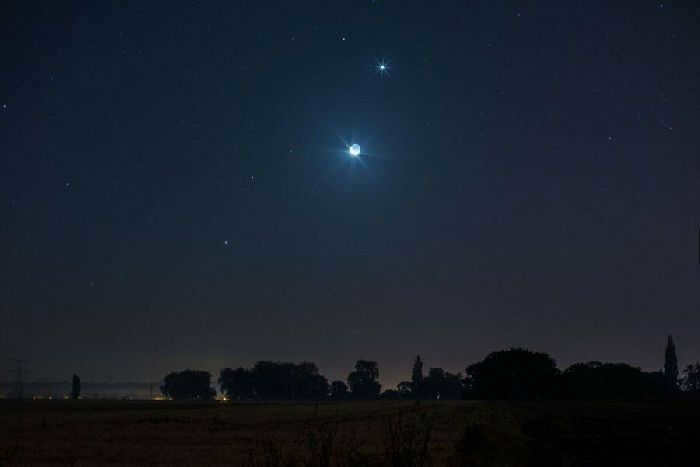
Some important physical attributes of Mercury include:
- equatorial radius – 2439 km;
- surface area – 7.48⋅107 square kilometers;
- volume – 6.083 x 1010 cubic kilometers;
- mass – 3.33×10²³ kg;
- average density – 5.43 g/cc.
Mercury is part of the Earth group of planets. In terms of its physical characteristics and appearance, Mercury bears a resemblance to the Moon.
Composition of the Atmosphere
Mercury possesses an incredibly thin helium atmosphere with small amounts of neon, argon, and hydrogen. These gases are primarily introduced and expelled by the solar wind. The distance between gas atoms is significant, preventing them from forming stable bonds due to the planet’s weak magnetic field. As a result, Mercury lacks a distinct atmosphere.
Because of the absence of an atmosphere, Mercury experiences extreme fluctuations in surface temperature, more so than any other planet in the solar system. In the equatorial regions, daytime temperatures average +427 °C, while nighttime temperatures plummet to -173 °C. The polar regions are subjected to perpetual cold, with temperatures never exceeding -93 °C.
Characteristics of the composition
Mercury, similar to the majority of planets, is composed of three primary components:


- The outer layer of Mercury, known as the crust, has a thickness of around 300 kilometers. It is composed of regolith, which is a loose and friable soil.
- Beneath the crust is the mantle, which has a thickness of up to 600 kilometers. It acts as a transitional substance, connecting the molten core components with the solidified crust layers.
- The core of Mercury is located at the center and has a radius of up to 1800 kilometers. It is primarily composed of a mixture of iron and nickel.
Mercury possesses the majority of its mass within a core that consists of a blend of metals. The iron-nickel core of Mercury constitutes roughly 3/4 of its diameter, which is approximately equivalent to the size of the Moon. In comparison to the cores of other planets, it is incredibly substantial.
Mercury is often compared to the Moon due to its abundance of craters on its surface. The planet’s landscape took shape as plains around one billion years ago. However, the absence of a protective atmosphere has resulted in Mercury’s surface enduring significant damage from collisions with celestial bodies, resulting in the creation of countless craters.
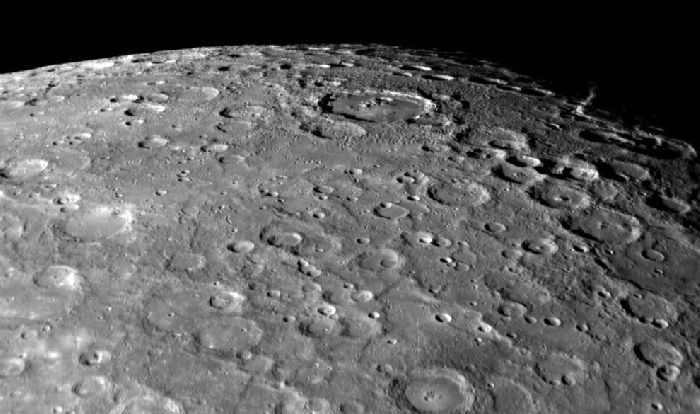

The planet Mercury is the tiniest planet in our solar system. In fact, Mercury is so small that it comes in second place in terms of size, after Saturn and Jupiter’s largest moons, Titan and Ganymede.
What have we discovered?
Mercury is the closest planet to the Sun and the smallest planet in our solar system. It belongs to the group of terrestrial planets, just like Earth, and it bears a striking resemblance to our Moon in appearance. Mercury is characterized by its remarkably large core, extreme temperature fluctuations, and its nearly non-existent atmosphere.
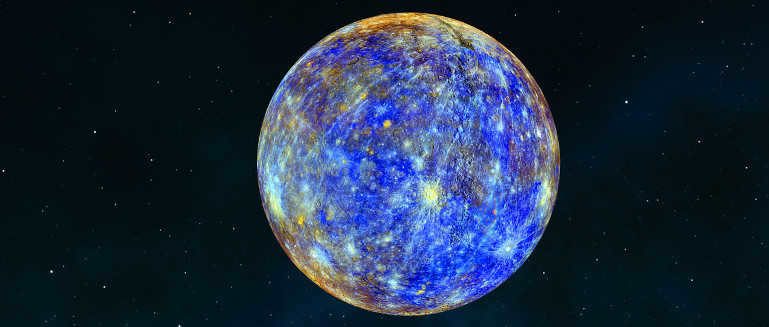
Mercury is known as a dwarf planet, making it unique and extraordinary. It captivates the attention of stargazers all over the world, visible in the night sky without the need for microscopes. This enigmatic celestial body has left a lasting impression on numerous countries and cultures, leaving many intrigued by its mysteries. So, who exactly is this enigmatic Mercury?
Overview of Mercury
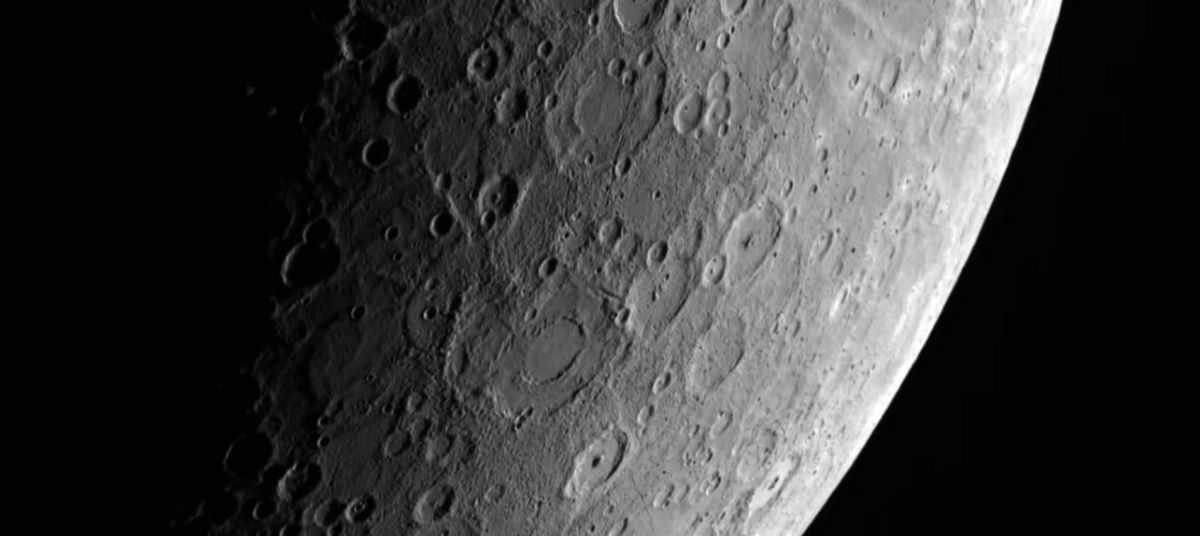
In terms of its position in relation to the Sun, Mercury can be described as being the closest planet to it. It has been known to mankind since ancient times and has been documented by various cultures around the world. The planet was named after the Roman god of commerce, Mercury.
Mercury’s atmosphere is extremely thin, allowing direct sunlight to reach its surface without much interference. The intense heat on the planet causes metals in rocks to melt, resulting in a surface covered with silvery streams and puddles.
The planet’s core generates pulses and creates a magnetosphere that surrounds the planet.
The atmosphere is in a residual state and is highly rarefied.
The planet’s surface is marked with numerous large craters and has a similar structure to our own moon.
Satellites of Mercury
When it comes to studying astronomy, the question of the satellites of Mercury and their origin often arises. However, unlike Venus, Mercury does not have any satellites.
The Age of Mercury
Like any other planet, the concept of age is relative when it comes to Mercury. In order to understand the age of Mercury, it is important to consider the formation of our star, the Sun, and then the planets themselves. This process began with the Big Bang, a massive explosion that scientists compare to the formation of a supernova star.
Processes in the hydrogen gas clouds were triggered, leading to their self-destruction. Several objects, including the Sun, formed after the flash. The resulting impulse did not dissipate in space, but instead caused the rotation of the clouds, shaping them into a disk with a star-shaped center. This disk attracted cosmic dust, which accumulated in it. The collision of small particles within the vortex resulted in the formation of proto-embryos, from which all the planets eventually emerged.
As a result, all planets are nearly the same age. Scientists have determined this by examining meteorite fragments that have fallen to Earth and calculating their age using carbon analysis. These planets have existed for billions of years, specifically 4.6 billion years.
Astronomical properties
When it comes to the Sun, this planet is situated at an angle, making it challenging to determine its exact stellar magnitude. Some data suggests it is 1.9m, while others indicate it is 5.5m.
This poses a problem when observing the planet and contributes to its limited study. Another factor is the relatively small distance from the sun to Mercury, which is 58 million kilometers according to our standards.
The most favorable locations for observing Mercury are low or equatorial latitudes due to the prevalence of daylight over twilight. In high latitudes, it is not possible to observe this planet, except during a solar eclipse.
During the equinoxes, astronomers at mid-latitudes in either hemisphere can observe the planet. They do so at the onset of twilight in the evening or before dawn in the morning. The crucial condition is that Mercury should be at its maximum distance from the star during observations.
In astronomy, the symbol used to represent this planet is an image of a winged god with a staff known as the caduceus.
Dimensions, weight, and path
When it comes to the solar system, planets of this size are considered small. This is not surprising. The mass of Mercury is only 3.31 – 1023. Despite its small size, its density is relatively high at 5.4 grams per cubic centimeter. Additionally, Mercury has a radius of 2.4 kilometers.
What sets Mercury apart from other planets is its elliptical orbit. This means that the planets closest to it can vary depending on its phase. At aphelion, the distance from Mercury to the sun is 70 million kilometers, while at perihelion, it decreases to 46 million kilometers.
For a long time, scientists believed that Mercury did not undergo axial rotation. However, this is not the case. It does rotate, but at a reduced rate. In fact, it only completes 1.5 rotations around its axis for every full revolution around the sun. The speed of this rotation is a mere 48 kilometers per second. While this speed remains constant, it changes as Mercury orbits the sun. This results in an intriguing phenomenon known as the “biblical effect,” where the sun appears to freeze and then reverse its motion by 180 degrees.
Magnetic force
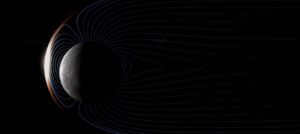
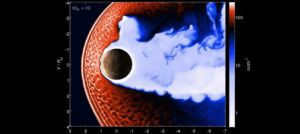
Physical Characteristics of Mercury
Due to its composition and topography, Mercury is classified as a terrestrial planet because of its solid outer shell. In comparison to the gas giants in our solar system, Mercury is relatively small, with a diameter of just 4.8 kilometers. However, it is not a moon, but rather a planet in its own right.
Having endured over 3.8 billion years of volcanic activity and intense asteroid bombardment, Mercury has developed its current structure.
When comparing the mass of Mercury to that of Earth, it is only 0.055, making it significantly smaller and about 20 times lighter.
Its radius, in comparison to Earth’s, is 0.38, which is smaller than the majority of other planets’ satellites.
| Equatorial diameter | 4,879.4 kilometers. |
| Polar diameter | 4,879.4 kilometers. |
| Average diameter | 4,879.4 km (0.3829 Earth’s diameter) |
| Volume | 6.083⋅10*10 km3 0.056 terrestrial |
| Surface area | 7.48⋅10*7 km2 0.147 terrestrial |
| Mass | 3.33022⋅10*23 kg 0.055274 terrestrial |
| Average density | 5.427 g/cm3 0.984 terrestrial |
| Free fall acceleration at the equator | 3.7 m/s2 0,377 g |
| First space velocity | 3.1 km/s |
| Second space velocity | 4.25 km/s |
| Equatorial rotation speed | 10.892 km/h (3.026 m/s) (at the equator) |
| Rotation period | 58.646 days |
| Axis tilt | 2,11′ |
| Albedo | 0.068 (Bond) 0.142 (geometric) |
| Apparent stellar magnitude | -2.6m to 5.7m |
Day and night
We are used to the fact that our planet has a 24-hour day. However, not all planets follow Earth’s norms, and the difference in time can be substantial.
On this particular planet, a day lasts for 1392 hours, equivalent to 58 Earth days. Venus holds the record for the longest day, with a duration of 243 Earth days.
Composition and surface
can be rephrased as
Makeup and outer layer
.
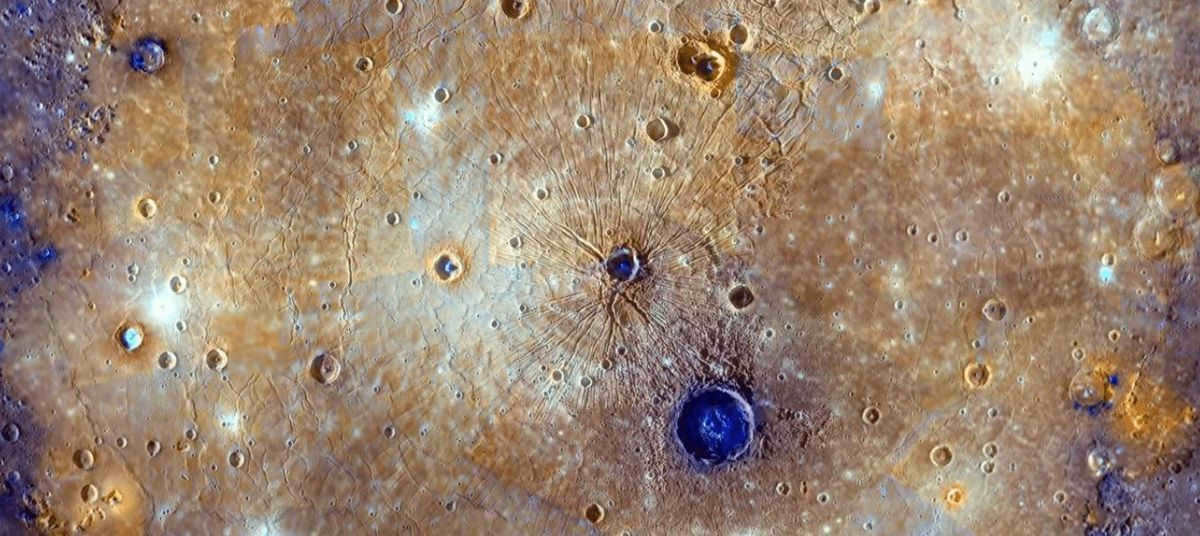
Atmosphere and temperature
It is hypothesized that the planet previously possessed a complete atmosphere. However, due to its proximity to the Sun and intense cosmic winds, it gradually dissipated. The weakening magnetic field and gravity also played a role in its thinning. This theory is supported by the presence of an ectospheric trail that can be observed in space. This trail resembles the tails seen on many comets and spans over a distance of 2 million kilometers.
The temporary exosphere of Mercury is formed by meteor dust and gas residues brought by the solar wind. It is highly rarefied and thinned compared to the exosphere of Earth. It contains a small amount of gases, with oxygen being the dominant gas at 42%. Sodium, although not a gas, is also present in significant quantities, accounting for 29% of the atmosphere. Sodium is lifted into the atmosphere from the planet’s surface by the solar wind, and its high concentration is due to the proximity of the sun and the scarcity of other gases. Hydrogen makes up 22% of the atmosphere, while helium and other gases are present in very small percentages.
The planet’s atmosphere has low density, resulting in large temperature differences. On the side facing the Sun, temperatures can reach +427 °C, while the darkened side experiences extreme cold, with temperatures no higher than -173 °C. The poles, where the sun does not reach, have even lower temperatures, averaging around -183 °C. These temperature variations are influenced by the planet’s low axis. The average temperature on Mercury is approximately 179 °C.
| On the surface | 80 to 700 K (-190 to +430 °C) |
| Atmospheric pressure | ≲ 5⋅10-15 bar |
| oxygen | 42.0 % |
| sodium | 29.0 % |
| hydrogen | 22.0 % |
| helium | 6.0 % |
| potassium | 0.5 % |
| water, carbon dioxide, nitrogen, argon, xenon, krypton, neon, calcium, magnesium. | 0.5 % |
On the surface, the temperature ranges from 80 to 700 K (-190 to +430 °C), while the atmospheric pressure is less than or equal to 5×10-15 bar. The composition of the atmosphere includes 42.0% oxygen, 29.0% sodium, 22.0% hydrogen, 6.0% helium, 0.5% potassium, and 0.5% water, carbon dioxide, nitrogen, argon, xenon, krypton, neon, calcium, and magnesium.
Internal organization
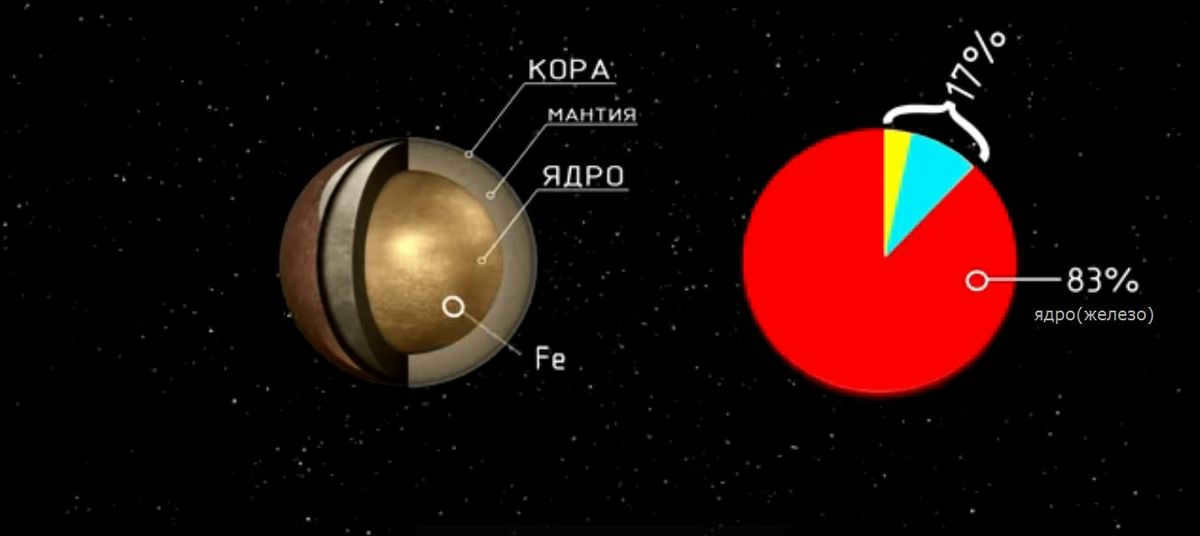

Merkury, a planet similar to our own, boasts a comparable structure.
- Its core measures 3.6 km in diameter and constitutes over 80% of its total mass;
- Scientists estimate the mantle to be approximately 600 kilometers thick;
- The crust ranges from 100 to 300 kilometers in thickness.
The numerous craters that span most of the planet’s surface indicate heightened geological activity in the past. This activity awakened volcanoes, some of which filled the craters with lava. As the lava cooled, it formed mountain ranges and fissures across the planet.
Water Presence on the Planet Mercury
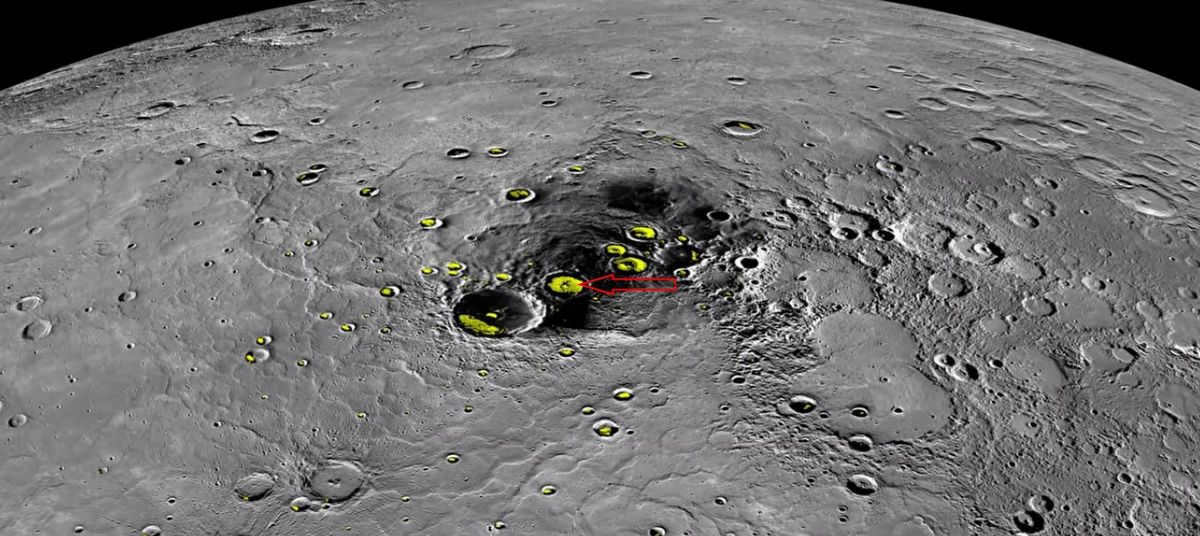

The extreme temperature fluctuations and lack of atmosphere prevent the presence of liquid water on the planet’s surface. Due to the effects of solar wind and weak gravitational pull, any liquid water on Mercury would quickly evaporate and escape into space.
However, this does not mean that the planet is completely devoid of water. In fact, recent observations have revealed the presence of ice at Mercury’s poles. The perpetually shaded craters at the poles provide a stable environment for the ice to remain intact and prevent it from melting.
In 2008, a space expedition unveiled the presence of water vapor in the atmosphere of the planet. It is speculated that these particles of melted ice were carried to the surface by the planet’s winds.
As a result of this research, scientists have confirmed that the planet possesses an immense water supply, totaling over 3 trillion tons.
It is widely believed that this ice was delivered to the planet by comets.
Composition of chemicals
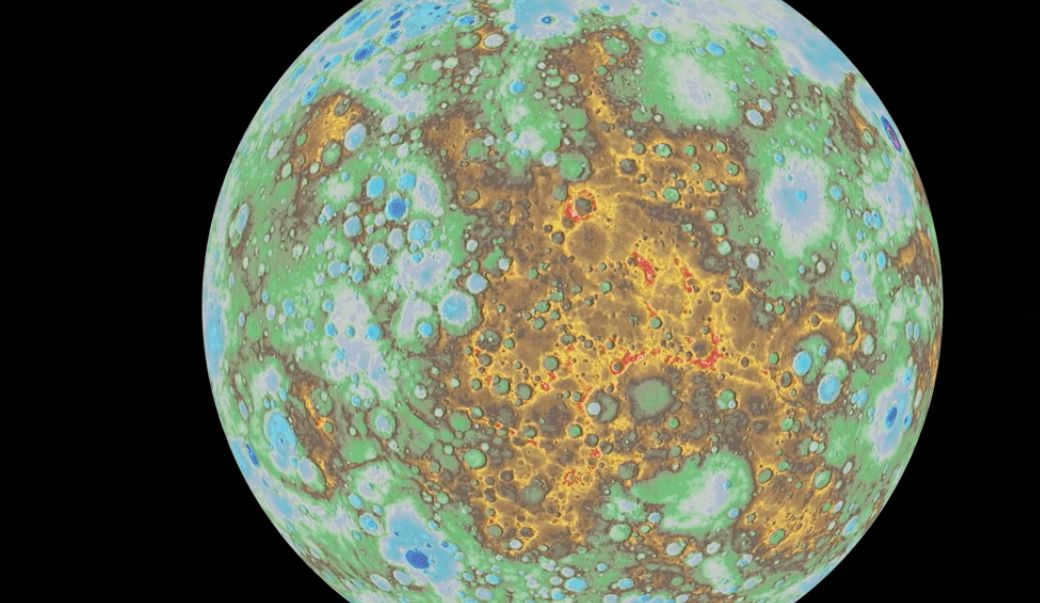

The planets in our solar system are categorized into different groups based on their structure and chemical composition. Mercury falls into the terrestrial group, which means it shares some similarities with Earth. However, there are also notable differences:
- The core of Mercury is predominantly made up of iron, with a small amount of nickel. This unique composition is believed to have been formed through the collision of the proto-nucleus with another celestial body during the early stages of the solar system’s formation. The core remains in a molten state due to ongoing internal processes.
- The mantle is composed of a higher concentration of silicates, specifically silicon and peridotite. Additionally, the mantle contains iron and oxygen, which are familiar to us. Among the minerals present are calcium, magnesium, and manganese remnants.
- The crust is primarily composed of silicon (over half, 53%) and aluminum (only 15%) oxides, along with other elements. This composition is also found in the rocks of the planet, giving it a similar composition to the lunar surface.
- This planet has an excess of sulfur and magnesium, while metals like aluminum or titanium are scarce. Iron and calcium are also in limited supply.
Did you know?
Mercury, the closest planet to the Sun, has many intriguing characteristics. Here are some fascinating facts:
- Mercury holds the distinction of being the planet closest to the Sun, with a distance of only about 58 million kilometers.
- In comparison to the vastness of our planet, the distance between Mercury and the Sun is 2.6 times shorter.
- Out of all the planets in the solar system, only two possess a magnetosphere. Our planet Earth is one of them, and the other is Mercury. However, Mercury’s magnetic field is much weaker, measuring 100 times less powerful than Earth’s.
- In ancient times, people believed that Mercury did not rotate on its axis. However, this theory was debunked in 1960 when radar data showed that the planet does indeed rotate. A year on Mercury lasts only 88 days, which is equivalent to 2 months and 26 days for us.
- Despite its small size, Mercury can be seen from Earth even without a telescope.
- The surface of Mercury is covered in wrinkles, known scientifically as escarpments. These escarpments are believed to be caused by drastic temperature differences in the planet’s core. Some of these “wrinkles” can reach heights of several hundred kilometers.
- Recent discoveries have revealed that Mercury has underground oceans of vapor, which occasionally erupt to the surface through geysers.
- Mercury’s interior lacks strong geological processes, preventing it from undergoing self-repair. As a result, the planet is covered in numerous craters formed by collisions with celestial bodies.
- References to this planet can be traced back to the Sumerian era, approximately 3000 B.C.
- Mercury possesses a thin layer of gases and a gravitational force that is 38% weaker than Earth’s. Consequently, objects weigh less on this planet, with 100 kilograms on Earth equating to only 37.7 kilograms here.
- This planet even boasts its own version of Mickey Mouse.
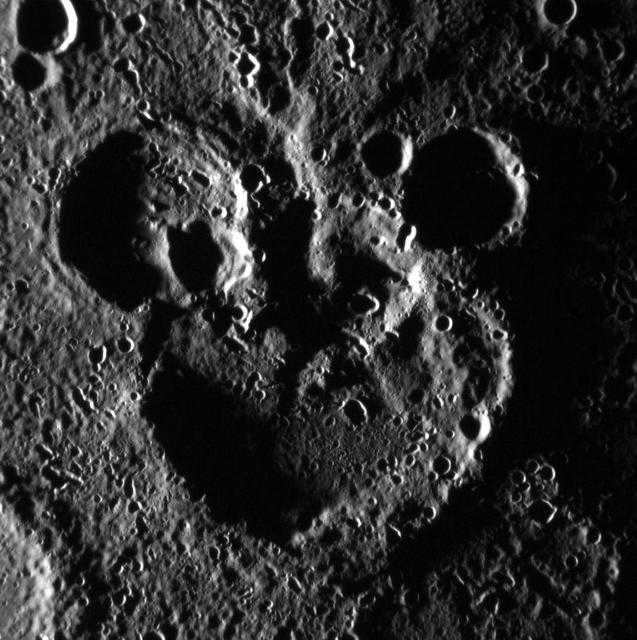

Possible Explanations for the Origin of Mercury
There have been numerous theories proposed by scientists regarding the formation of planets, but the exact answer remains unknown. Due to the lack of sufficient data, it is currently impossible to confirm or disprove these hypotheses. It is possible that future generations will have access to the necessary information to provide definitive answers.
Presently, in the field of astronomy, there are several hypotheses that serve as the foundation for theories on the formation of planets.
- One such hypothesis is the nebular theory, which suggests that Mercury was formed from the convergence of two stars within a cosmic nebula.
- As per the second theory, Mercury has never been regarded as a complete planet. It functions as a satellite of Venus. The cause of this estrangement has been debated until now. Thanks to mathematical calculations conducted by American astronomers in 1970, this theory has been substantiated. Furthermore, it can account for the planet’s rotational anomaly.
- An alternate hypothesis suggests that Mercury originated from the core (embryo) of a protoplanetary object. Due to the influence of cosmic radiation and winds, nearly all light chemical elements were depleted from the inner region of the protoplanet. As a result, Mercury presently possesses an excess of heavy elements.
The orbit’s precession is anomalous
Scientists believe that Mercury is the most accurate representation of the theory of relativity. Its movements demonstrate this.
According to Newton’s mechanics, all planets orbit our star in an elliptical trajectory. The gravity of other planets has a direct impact on their orbit, causing a slight shift known as precession. However, Mercury does not conform to this calculation. Its arc error is only 0.1 seconds, which is of great significance on a cosmic scale. This discrepancy challenges Earth’s theories and laws.
The anomaly was first mentioned in 1859 by Urbain Leverrier, an astronomer at the French observatory. He proposed that Mercury’s orbit was influenced by an undiscovered planet or that it crossed an asteroid belt at some point in its orbit. This hypothetical planet was named Vulcan, but it remained a mere theory.
| Perihelion | 46,001,009 kilometers 0.30749951 a.e. |
| Aphelion | 69,817,445 km 0.46670079 a.u. |
| Orbital eccentricity | 0,20563593 |
| Sidereal orbital period | 87.969 days |
| Synodic orbital period | 115.88 days |
| Orbital velocity | 47.36 km/s |
| Inclination | 7.00° relative to the ecliptic plane 3.38° relative to the solar equator 6.34° relative to the invariant plane |
| Longitude of the ascending node | 48,33167° |
| Pericenter Argument | 29,124279° |
The Exploration of Mercury
Mercury, the mysterious planet, has always kept its secrets hidden from scientists and explorers. In ancient times, scholars could only observe its orbit and speculate about its nature. However, with the advancements in scientific knowledge and the introduction of robotic missions, studying Mercury has become significantly more manageable and accessible.
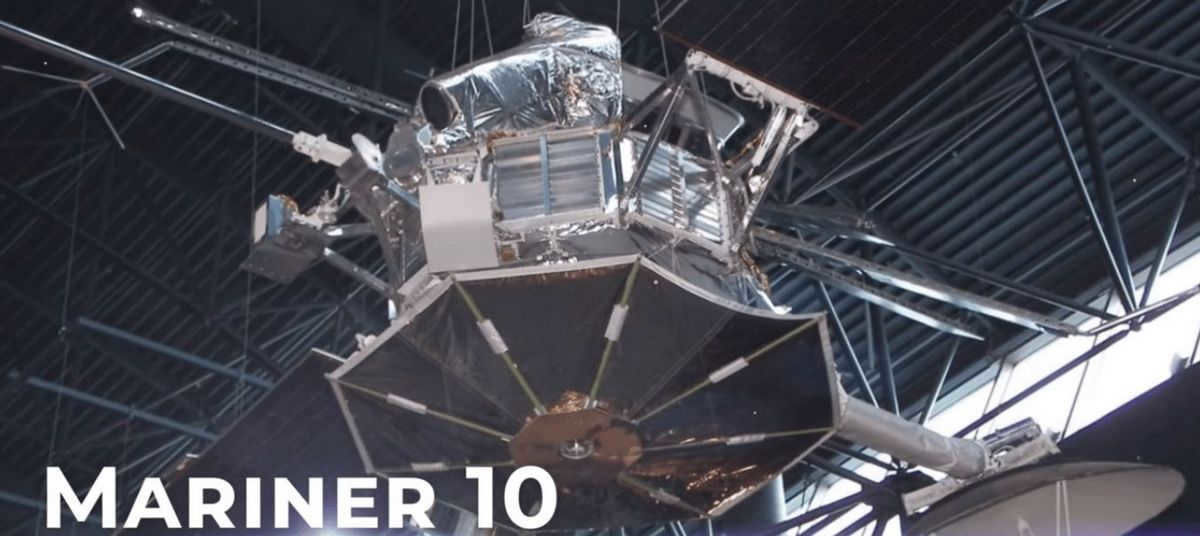

Starting in 1974, NASA launched an extensive study of Mercury with the Mariner 10 mission. By capturing images of the planet, scientists were able to confirm their hypotheses and conduct a comparative analysis. Similar to the moon, Mercury’s surface is filled with craters, while its valleys are covered in frozen lava deposits. However, the mission only provided a glimpse of 45% of the planet, leaving the rest unexplored until 2008. This was rectified with the MESSENGER mission.
Currently, the Bepicolombo spacecraft has been dispatched to Mercury for further analysis. This joint project between NASA and Japan aims to gather more data, with preliminary calculations estimating results no earlier than 2025.
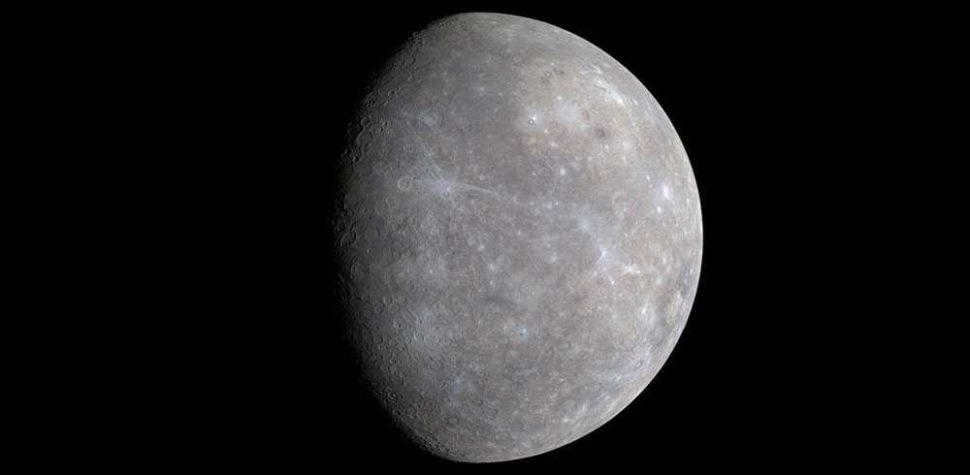
Mercury is commonly regarded as the initial planet in our solar system due to its proximity to the sun. Its mention can be traced back to the 14th century BC, and it was given the name in tribute to the ancient Roman deity associated with trade. Mercury possesses a plethora of distinctive characteristics that distinguish it from the rest of the planets in orbit around our magnificent Sun.
The weight and dimensions of the celestial body
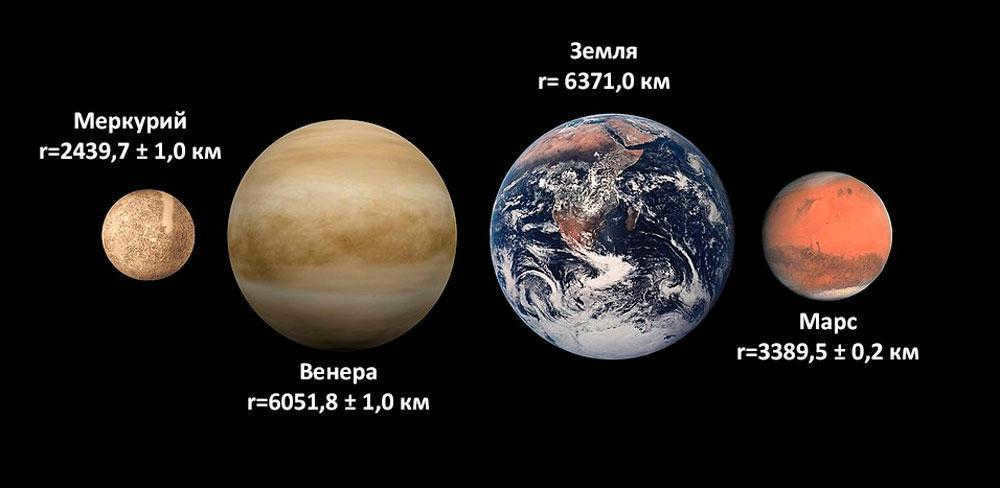

Mercury has held the title of the smallest planet in the solar system since 2006, when Pluto was “reclassified” as a dwarf planet. With a radius of only 2439.7 kilometers, Mercury is significantly smaller than the other planets. What’s fascinating is that even the two moons of the giant planets, Ganymede and Titan, have a larger radius (and therefore volume) than Mercury! In fact, Mercury’s volume is about 18 times smaller than Earth’s volume. Another interesting fact is that Mercury’s polar and equatorial radius are the same, unlike other planets which have polar compression.
Mercury is a small planet with a mass that is only 5.5% of Earth’s mass. However, it surpasses the moons Ganymede and Titan in this aspect.
The Orbit of Mercury
Mercury’s orbit is an ellipse with an eccentricity of 0.206, which is the highest among all the planets. The distance between Mercury and the Sun ranges from 46 to 69.8 million kilometers, with an average distance of 57.9 million kilometers.
Mercury completes one revolution around the Sun in approximately 87.969 days. During this time, its linear velocity varies from a minimum of 38.7 km/s to a maximum of 56.6 km/s. Therefore, Mercury holds the record for both linear and angular velocity among the planets in the solar system.
In the 19th century, scientists observed that the trajectory of Mercury did not precisely match the predicted trajectory and exhibited some unusual precession. This discovery prompted physicists to reevaluate the existing Newtonian theory of gravity, ultimately leading to the development of Einstein’s theory of relativity, which effectively accounted for this precession.
Unlike other planets in the solar system, Mercury does not possess any natural satellites. The only other planet with this characteristic is Venus.
The composition of Mercury
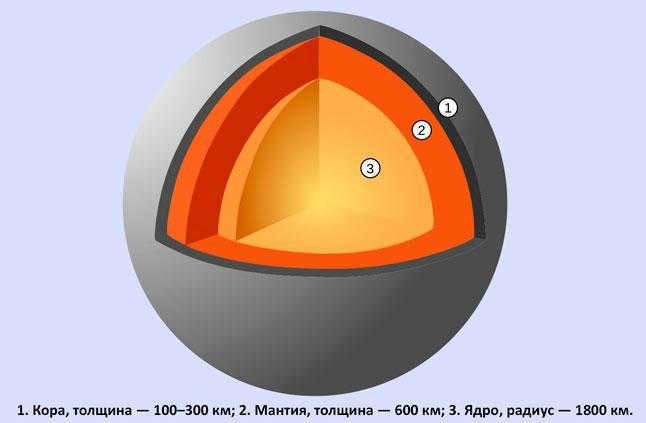

Mercury possesses an atmosphere, but it is incredibly delicate. Its pressure is 500 billion times lower than Earth’s atmospheric pressure. The atmosphere is composed of atoms of gases and metals that have been dislodged from the planet’s surface, including oxygen, helium, sodium, potassium, and hydrogen.
Scientists believe that Mercury harbors a substantial core, measuring 1800 km in radius, which is in a liquid state (in contrast to the solid cores of Venus, Mars, and Earth). Above the core lies a thin mantle layer, spanning 600 km in thickness. Further above is the crust. Previously, it was believed that the crust’s thickness ranged from 100 to 300 km, but recent research provides a different estimate: 26±11 km. An exceptional characteristic of Mercury is the remarkably high concentration of iron found within its core.
The planet is characterized by a lack of geologic activity, with active processes believed to have ceased over 3.5 billion years ago. As a result, the surface remains largely untouched due to the absence of atmospheric phenomena such as winds and rain. Consequently, numerous ancient craters have been remarkably preserved.
Climate Change
